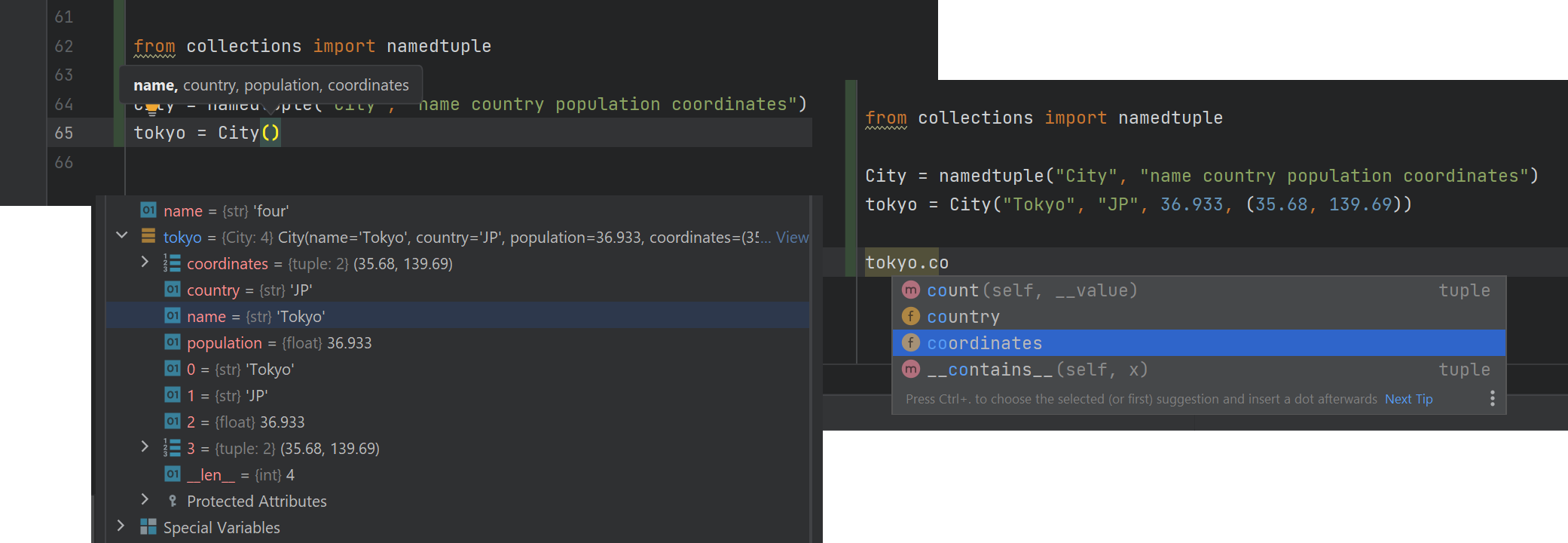Python: Named Tuples and Dataclasses
Named tuples bring Python slightly closer to real 😇 programming languages. They basically enrich tuples with type information, but doing it in a very low ceremony way. One could define classes for those purposes, but named tuple definitions are much shorter. They are very similar to Scala’s case classes or C# record types.
Example:
from collections import namedtuple
# define named tuple
City = namedtuple("City", "name country population coordinates")
# create an instance of it
tokyo = City("Tokyo", "JP", 36.933, (35.68, 139.69))
This simple 3-liner (or less, depending how you count) is really powerful:
- You get suggestions when creating instances of it.
- Debugger shows up tuple property meanings.
- Suggestions for calling into fields are also displayed.

P.S.
namedtuples take exactly the same amount of memory as tuples.- They use less memory than a regular object, because they don’t store attributes in a per-instance
__dict__.
Update 03/06/2021
Since Python 3.7 it’s better to use dataclasses as they are move powerful when typing. For instance, you can specify types of fields, like so:
from dataclasses import dataclass
@dataclass
class City:
name: str
code: str
avg_age: float
coords
To contact me, send an email anytime or leave a comment below.
